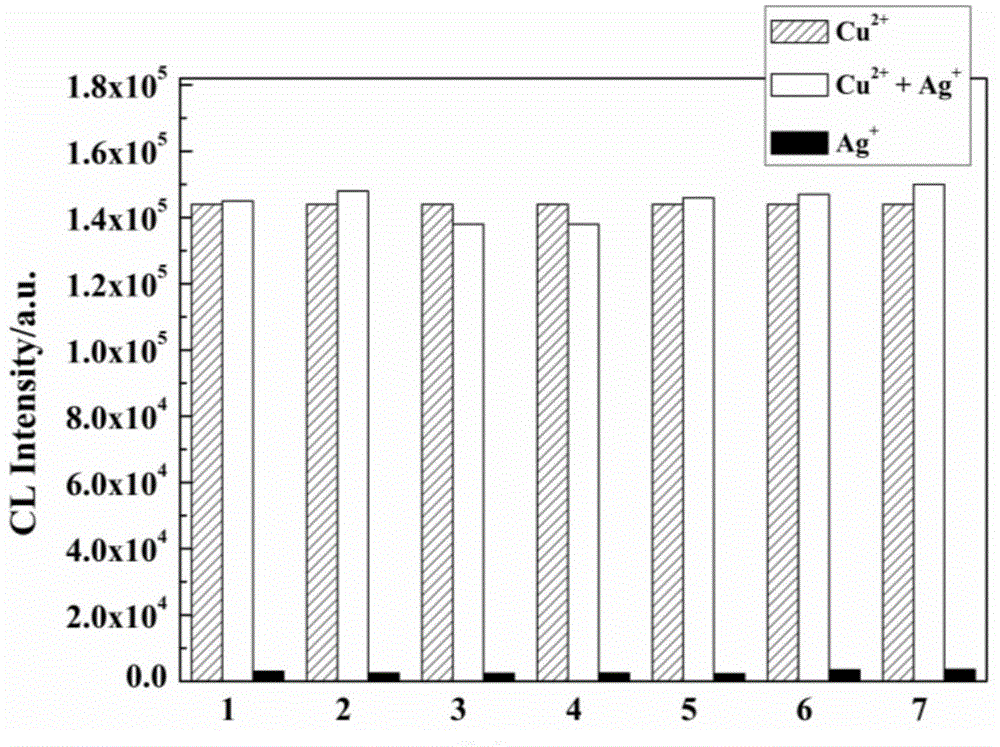Biological sensor based on CuS nano-particle cation exchange enhanced chemiluminescence
A cation exchange and nanoparticle technology, which is applied in the direction of chemiluminescence/bioluminescence, and analysis by making materials undergo chemical reactions, can solve the problems that sensors cannot be recycled, biological samples are destroyed, and luminol chemiluminescence is unfavorable.
- Summary
- Abstract
- Description
- Claims
- Application Information
AI Technical Summary
Problems solved by technology
Method used
Image
Examples
Embodiment 1
[0021] 1. Synthesis of CuS nanoparticles
[0022] CuS nanoparticles modified with mercaptopropionic acid were prepared according to literature (Anal. Chem. 2008, 80, 7206-7212). Add 15 μL of mercaptopropionic acid to 50 mL of 0.4 mM Cu(NO 3 ) 2 In the solution, the pH value of the mixed solution was adjusted to 7.0 with 0.5M NaOH solution. Access to N 2 After deoxygenation for 30 min, the N 2 Deoxygenated 50mL of 1.34mM Na 2 S solution was added dropwise to the mixed solution. Response to N 2 Under protection, the reaction was stirred in a water bath at 28° C. for 24 h. During the reaction, the solution gradually changed from brown to dark green. The CuS nano-sol was dialyzed in a dialysis bag with a molecular weight cut-off of 7000 Dollon for 48 hours in the dark, and stored at 4°C for future use.
[0023] 2. Preparation of DNA probes modified by CuS nanoparticles
[0024] In a 10mL small beaker, add 2.0×10 -6 2 mL of DNA probe solution modified with amino group at ...
PUM
 Login to View More
Login to View More Abstract
Description
Claims
Application Information
 Login to View More
Login to View More - R&D
- Intellectual Property
- Life Sciences
- Materials
- Tech Scout
- Unparalleled Data Quality
- Higher Quality Content
- 60% Fewer Hallucinations
Browse by: Latest US Patents, China's latest patents, Technical Efficacy Thesaurus, Application Domain, Technology Topic, Popular Technical Reports.
© 2025 PatSnap. All rights reserved.Legal|Privacy policy|Modern Slavery Act Transparency Statement|Sitemap|About US| Contact US: help@patsnap.com



